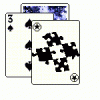>> Quests are designed to motivate the player to do the gameplay your game already has
well, thats one possible use for quests, but i'm not sure its the best use of them. just cause a task is possible in a game doesn't make it a good candidate for an epic quest or adventure. i can kill skeevers in sykrim, but anything less that kill 10,000 at once is not epic. ok, maybe 1000 at once <g>.
BTW, before i forget, i ran across this:
http://escholarship.org/uc/item/004129jn?query=The%20Grail%20Framework:#page-17
its the 2012 doctoral dissertation by Anne Margarete Sullivan of UC Santa Barbra Dept of Comp Sci: making stories playable on three levels in CRPGs.
i almost PM'd you the link last night.
in it she identifies stories in games at four levels: world backstory, main quest storyline, individual quest stroylines, and player level actions on a per encounter basis (what clever or un-clever things i did as the player during the encounter - IE my personal story created by my gameplay).
she developed two libraries plus tools, and two proof of concept games.
she uses relations matrices to track trust, friendship, romance, and family bonds between PCs and NPCs. relations are two way, what A thinks of B and what B thinks of A, rated on a 0-100 scale.
available dialog options are determined by relations, stats, active effects, and world state.
dialog responses are based on the same and affect relations, active effects, and world state.
available quests are based on relations, stats, active effects, and world state, and affect relations, active effects, and world state.
available plot point reveals are likewise based on relations, stats, active effects, and world state, and affect relations, active effects, and world state.
the proof of concept games have no combat, just dialog.
an excellent "gossip engine", but the available quests are hard coded and on the order of "break up the relationship between violet and james", due to the game type. so no help as far as my search for the "epic" goes.
almost 250 pages, but a very good white paper. really good work along the lines of chris crawford. numerous citations to others in the industry with similar thoughts on the subject.
another site with some insight:
http://www.whatgamesare.com/2011/02/video-game-writing-and-the-sense-of-story-writing.html
http://www.whatgamesare.com/
but again, nothing about "keppin' it epic".
taken together i think they are onto something.
the early lesson in film was "show don't tell". in games, it appears the early lesson is "play, don't show". i suspect that this concept combined with plot point reveals that let the player "discover" a story a bit at a time in an open world setting might be the way to go with "interactive story-playing" - hey i coined it first! <g>.
but that's really what we want - "interactive story-playing".
>> so if you have a list somewhere of gameplay types in your game, that's a good place to generate quests from
well i have 50 types so far, and only one is 100% non-combat. and this is Caveman we're talking about here - so of course you can do just about anything you could do in the real world. fish traps, musical bows, watching sunrises and sunsets, and snow related actions are some of the newest features added. and i finished cave paintings! still have to add custom user paintings though. i'm discovering that customizing the look of your character even when it has no gameplay value, has strong appeal to players - even me! the hardest of the hard core min-max gamers! i'll carry around extra encumbrance and second rate armor in fallout new vegas just cause its cool looking. too bad i can never wear it - i die too quickly. but someday i'll be high level enough to shed the combat armor and don the sherrif duster and the outlaw hat (zero armor points!).
>> Like if you can fish in the game, you can have a quest to catch X fish, or Y type of fish, or Z size of fish, or craft a pole/lure/bait..
but as James from Extra Credits says, that's a task, not a quest...
i just found the part 1 video, need to watch it.
>> It's also good to have the same quest type repeated at increasing levels of difficulty as the player's skill at playing the game improves.
for combat related quests, the number appearing scales with party strength (numbers and levels) , as does the amount of treasure, and the quality of "magic" items (high quality objects). so you automatically get "high level quests" when you're high level.
"build hut at ally's village" is the only non-combat quest so far. (yes - i added villages and wood palisade walls). a quest was the easiest way to handle that part of the NPC interaction. but its not really a quest, just a task that results from a successful dialog.
coming up with stuff to do in a game is easy. coming up with cool epic adventures to go on is somewhat more difficult.
i plan to revisit the seven basic plot types - of which "the quest" is just one.
a case in point: i just added a "defend caveman" quest. you must defend a NPC at a shelter from a raid by their enemies. success if all enemies dead, fail if NPC dies. fail if flee combat. now- how do you make that epic? do you simply place them far away, so the journey itself become an adventure? the farther it is, the less likely the player will be interested (more work). if its farther, the prize must be greater. do you add in some twists or setbacks along the way? remember - this is a quest gen, not a one shot disposable hard coded quest. it has to be generic and replayable. or do you come up with some contrived BS of needing special item A to kill animal B? doesn't work well with a realistic stone age setting. you're limited to believable quests, similar to missions for a mil shooter - no magic, no space men, no hokey BS - you've got people and weapons and dialog interactions and that's it. "epic" is a bit more of a challenge when you can't have "fantastic".








